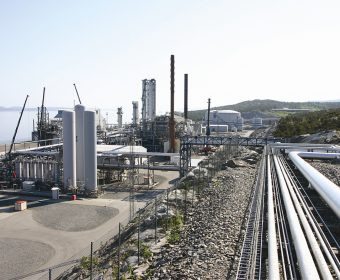Natural gas is colourless, flammable gas which can be found in penetrable mineral types in the earths crust. Usually found together with crude oil. The gas is formed by decomposition of organic materials. Natural gas is mainly composed of hydrocarbons, which exist in a variety of different forms. Natural gas is predominantly made up of methane(75 – 95 %), ethane, butanes, propane and nafta. The gas is built up of hydrogen- and carbon atoms and as such often called hydrocarbongas. We make distinctions between rich gas, wet gas and dry gas.
What is hydrocarbones?
Hydrocarbons are called “energy in a can”. They are composed of carbon and hydrogen. A carbon atom binds to four hydrogen atoms and makes up methane or CH4. The enery is liberated when heat is applied to the carbon atom and it reacts with oxygen in the air. More complex hydrocarbons are created when more carbon atoms join together. Then the energy amount also increases.
Source: Gassco


